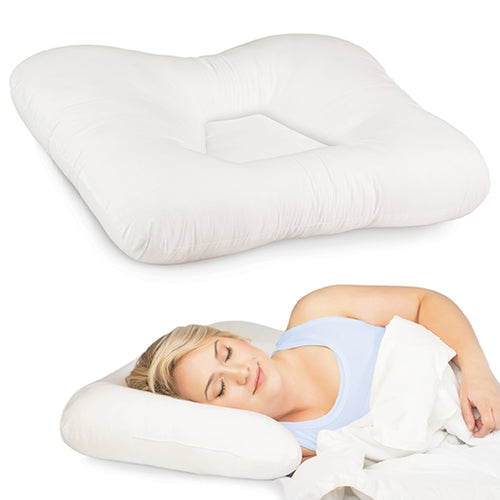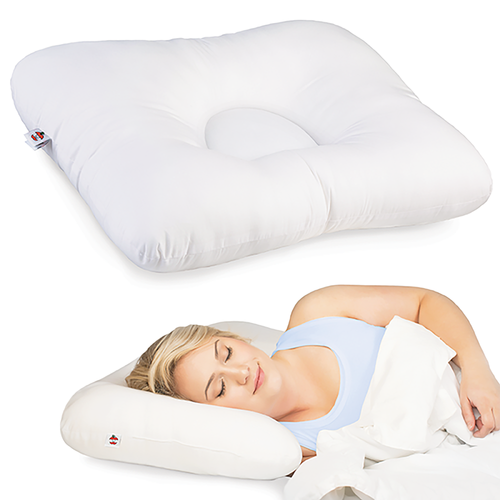

How Standing More Promotes Good Health
Brian Acton
Human beings spend a lot of time sitting down. Studies show that the average office worker sits for about 10 hours per day; those numbers can fluctuate based on profession and lifestyle, but all the time you spend sitting can add up fast. And sitting from six to eight hours per day has been linked to a wide range of health problems.
For me, sitting on the train to and from work, at the office, at the dinner table, and on the couch in the evenings seemed like an extreme amount of time spent inactive. Then the pandemic happened and I transitioned to working from home full time, where I didn’t even have the walking portions of my commute to break up all the sitting. I knew I needed to prioritize more activity for my own wellbeing.
The most straightforward way to sit less is obvious: stand more. Standing and regular activity promotes good health and battles the negative effects of too much sitting in the following ways:
- Standing Reduces the Risk of Serious Health Conditions
Spending more time on your feet will, of course, reduce the amount of time you spend sitting, and it’s worth the effort to reduce the risk of developing serious health conditions. Long periods of inactivity have been linked to the following health conditions:
- Cancer: studies have linked prolonged sitting to a greater risk certain types of cancer.
- Cardiovascular disease: the American Heart Association has linked long periods of inactivity to greater risk for cardiovascular problems and heart disease.
- Diabetes: there is a correlation between excessive sitting and diabetes.
- Osteoporosis: active people who sit less are less likely to develop osteoporosis.
- Standing Makes You Fitter and Stronger
Standing makes you fitter and stronger in several ways. It supports your bones, which require regular movement to maintain strength. It also burns far more calories than you do when you’re sitting. And moderate exercise builds muscle and makes you stronger.
Standing also improves circulation compared to sitting, which can restrict blood flow. It can even boost your metabolism, aid in pain relief, and improve your posture!
- Standing Helps Your Mood
Standing can even help boost your mood and brain functioning. With improved blood flow, standing delivers more oxygen and nutrients to your brain. Standing can boost your energy, increasing alertness and concentration. Regular standing and moderate activity can help boost your mood and make you feel happier.
How to Stand More
It’s generally recommended to get at least 150 minutes of moderate exercise or 75 minutes of intense exercise every week, but even that might not be enough to make up for hours of sitting each day. Standing and walking more throughout the day can reduce the time you spend sitting and promote better health outcomes.
Here are some tips on standing more:
- Set reminders on your phone, calendar, or activity tracker to stand up and/or walk every so often. Standing and walking every 30 - 60 minutes will break up, and reduce, your sitting time.
- Look for extra opportunities to stand or get low impact exercise. You could walk to the park to eat lunch instead of eating at your desk, take a walking meeting instead of sitting in a conference room, and stand on the train instead of sitting.
- Standing desks are a good solution for office jobs where you’re in front of your computer for long periods of time. Adjustable standing desks let you easily alternate between standing and sitting.
- Get a better night’s sleep. Poor sleep can lead to you feeling tired and sluggish all day, making it more tempting to sit. You can improve your sleep by going to bed and waking up at the same time every day and investing in a quality pillow.
While it took some adjustments, working from home eventually gave me the ability to stand and exercise more. Rather than take breaks to socialize around the office break room or walk to the coffee shop, I would schedule a quick home workout or household tasks into my routine. Over time, being intentional about standing more became second nature.
Sources
https://www.ahajournals.org/doi/full/10.1161/CIR.0000000000000440
https://www.juststand.org/the-tools/sitting-time-calculator/
https://www.nytimes.com/2020/06/24/well/move/sitting-sedentary-exercise-cancer-risk.html
https://www.washingtonpost.com/news/wonk/wp/2015/06/02/medical-researchers-have-figured-out-how-much-time-is-okay-to-spend-sitting-each-day/
Mentioned Products

Tri-Core Cervical Support Pillow


Tri-Core Ultimate Cervical Pillow, Firm Support

Therapeutica Orthopedic Sleeping Pillow

D-Core Cervical Support Pillow

Cerv-Align Cervical Support Pillow



